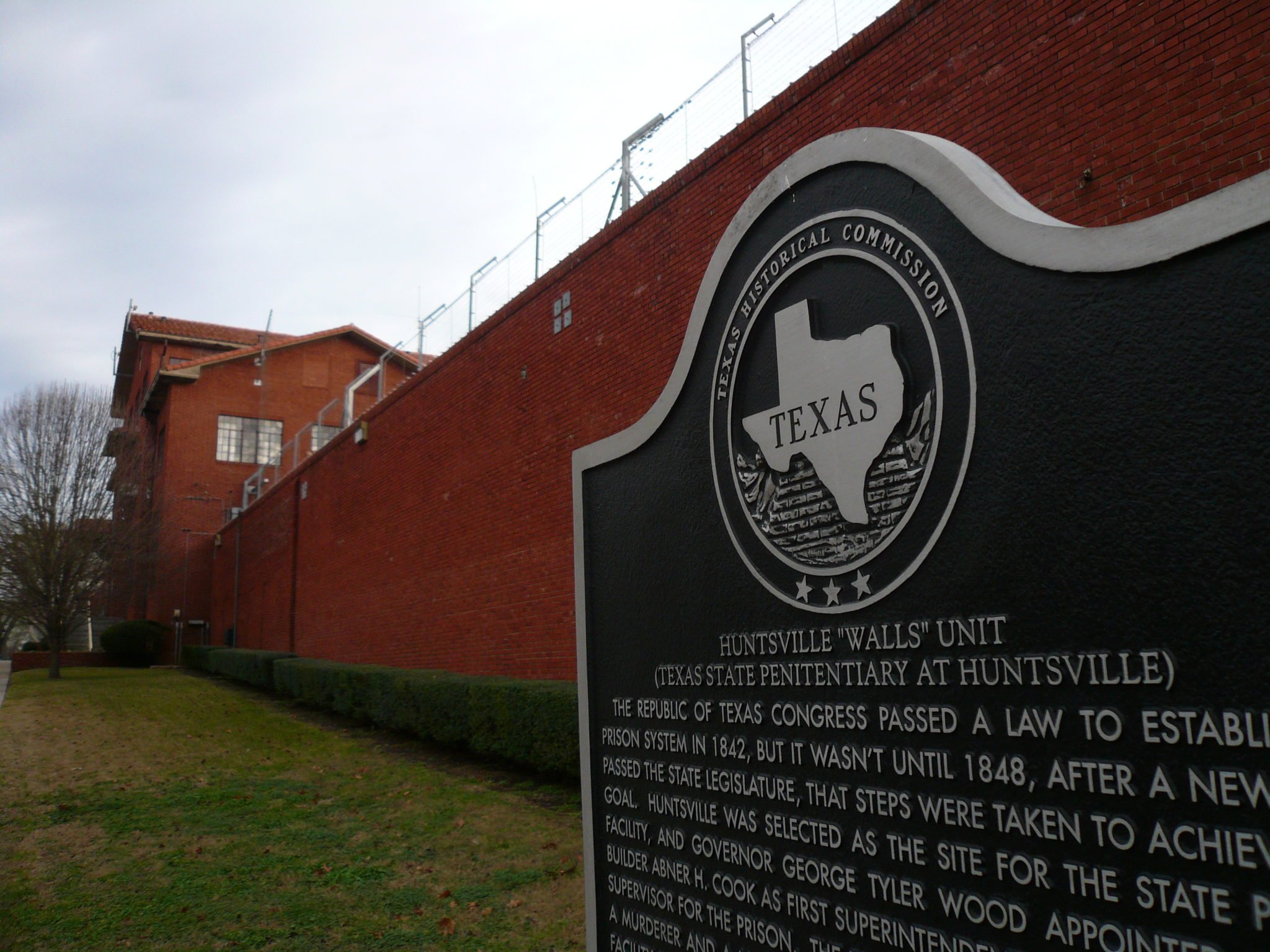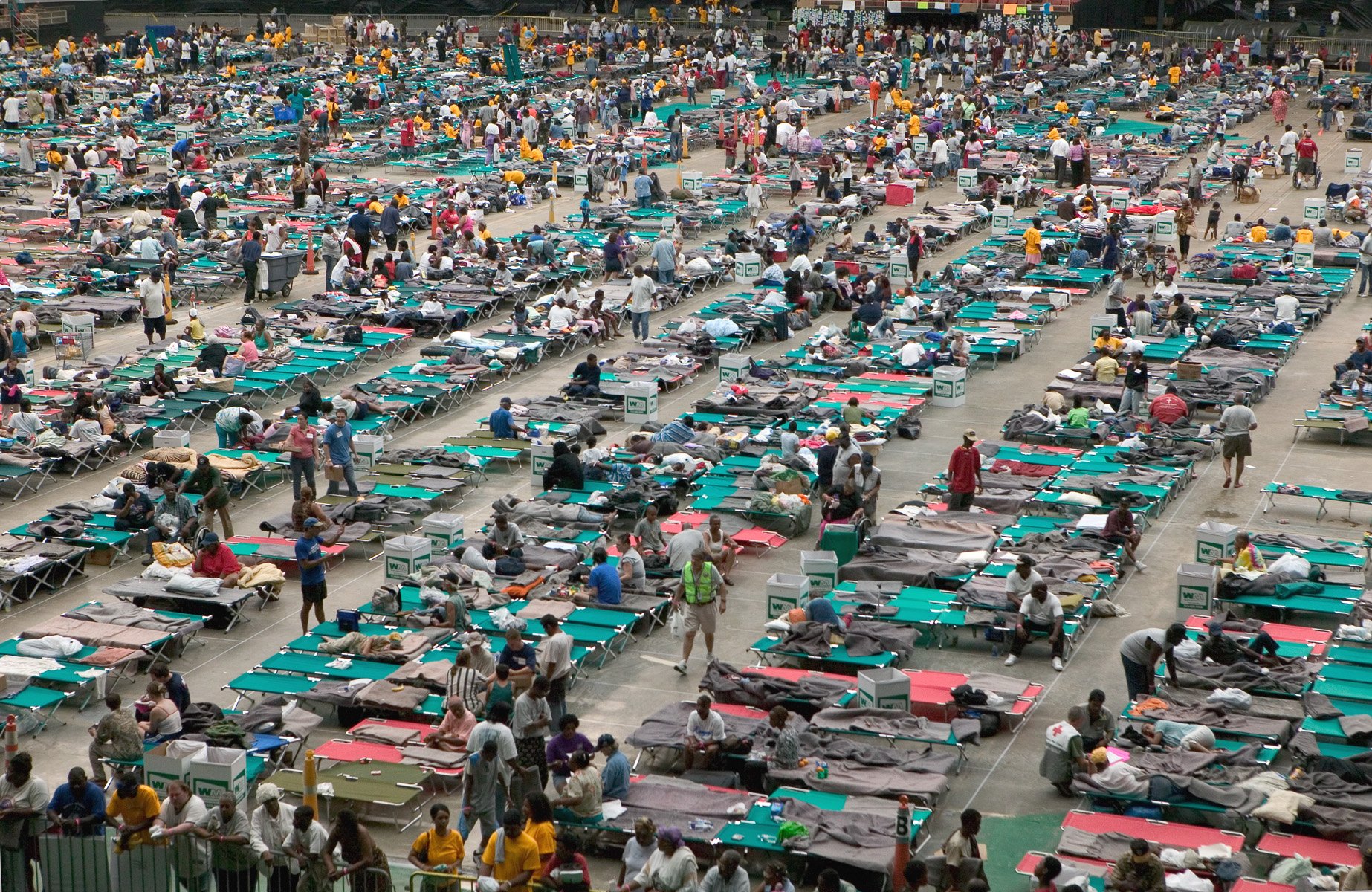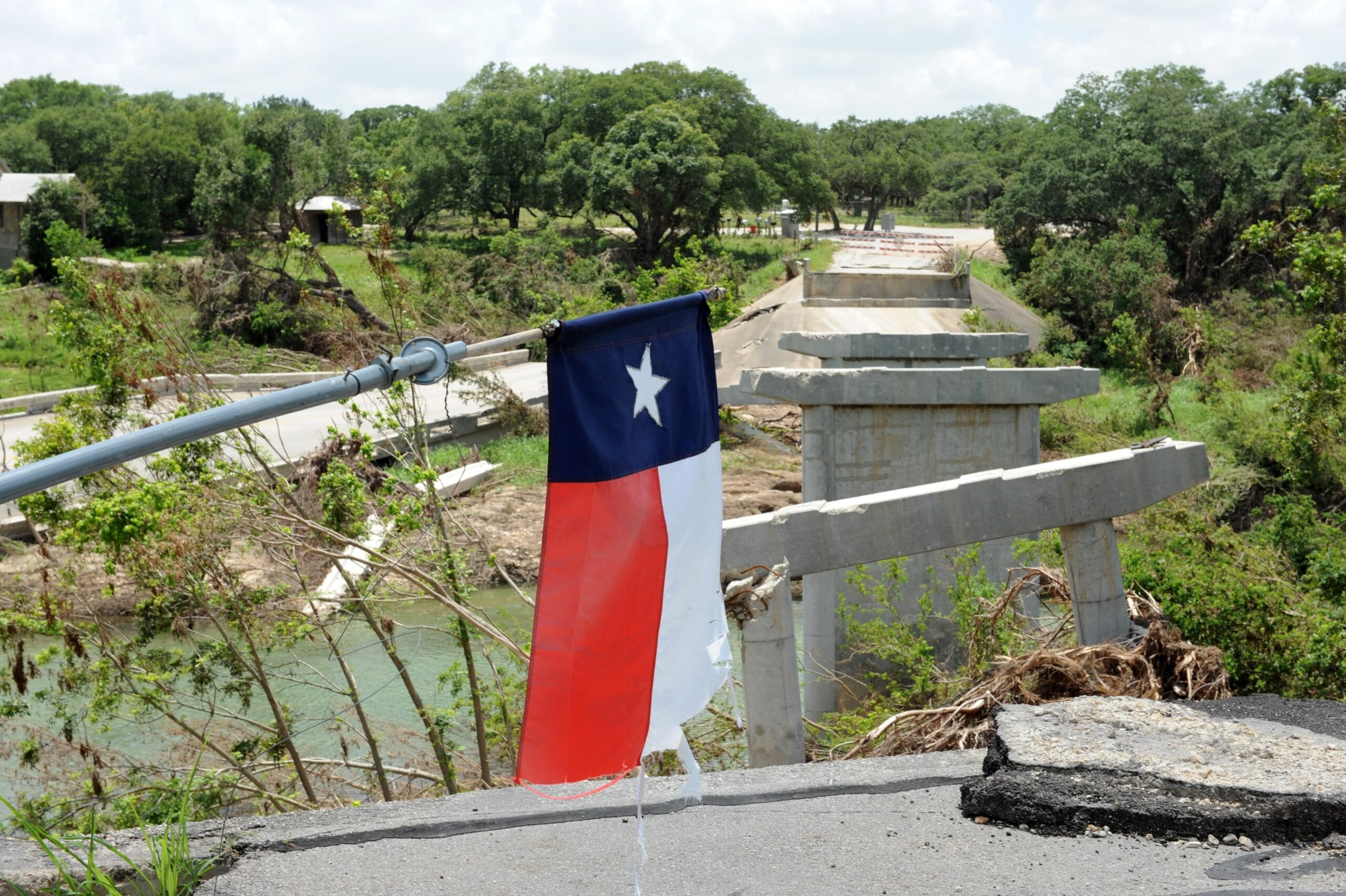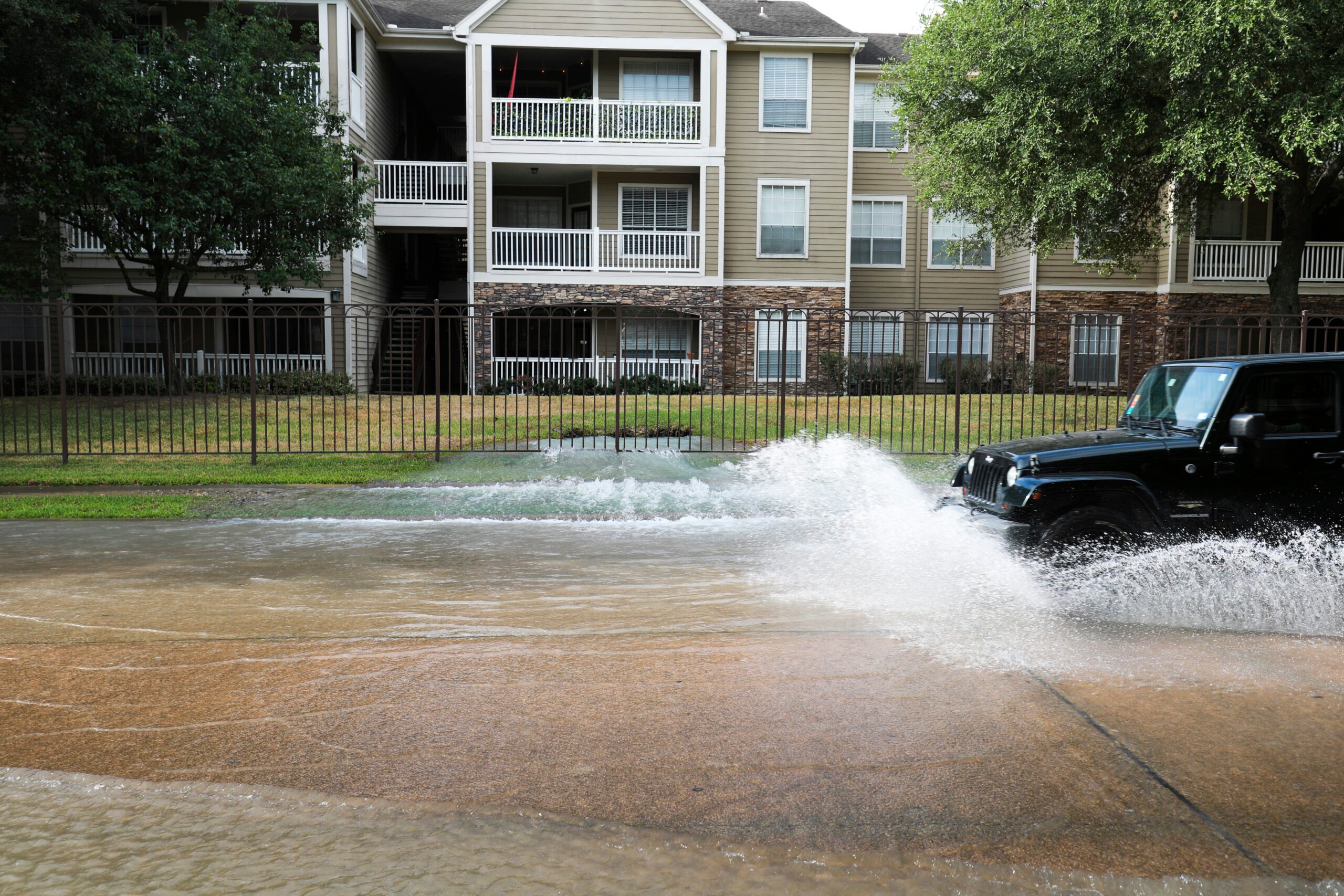
When Summer Heat Hits My Texas Prison
High temperatures and scarce air conditioning cause tempers to flare for prisoners and guards alike.
At Huntsville Unit, a prison situated on the edge of a vast national forest 70 miles north of Houston, the close calls increase with the heat. I’m talking about the temperaments of both inmates and guards. They worsen with the temperature.
Recently, I asked my four laundry co-workers—John, Ricky, Cliff, and Tony—about the heat. We all agreed that if we had air conditioning in our cells, there would be a lot less agitation at our prison.
Because there’s no legitimate cooling system in our cells, we’re forced to rely on alternative measures: fans, jerry-rigged A/C units, ice, cold water, and frequent showers. But those options only do so much. Huntsville Unit is 175 years old and constructed mostly of red brick. During the summer, indoor temperatures often exceed 90 degrees Fahrenheit. I sweat all day and wake up with a soaked mattress.
Most of us try hopelessly to get cool, sometimes collapsing from exhaustion. When it’s this hot, prison workers do less, dropping the ball on delivering ice or folding laundry. That tests everyone’s patience. “There’s a lot more close calls that happen as the heat goes up,” Cliff told me. “Sometimes physical fights do occur. For every one fight, there’s 10 almost-fights.”
The only place I get a little cold air is Sunday mornings in the air-conditioned chapel. Otherwise, there’s little relief. There’s no thermometer in Building 5, where I live, so I don’t know how hot it is indoors. But trust me: The heat is thick.
My building was built in 1947, as shown on a plaque outside. It’s shaped like a rectangle and contains eight wings. It used to have an outdoor courtyard in the center, but at some point prison officials placed a roof over the courtyard and turned it into an indoor gym, according to inmates I’ve talked to who have been here for 20 years or more. Next to the gym is an entire wall of windows. They stay open during the summer, but fresh breezes never come through. We essentially live in a glass house that traps heat.
In my cell, I always try to stay in the path of my fans. The prison commissary sells 9-inch fans for $23, and we’re permitted up to two fans at once. I have one hanging from my shelf, about 3 inches from my head when I’m in bed. My second fan is on the floor pointing upward. When it’s really hot, I set the fans to the highest speed. It’s a mostly futile endeavor. As soon as I get out of their range, I instantly feel hot.
Last month, a lot of people were moved from our unit because of their age or health status or a certain medication that made someone more vulnerable to the heat. Some were moved from the second floor to the first floor, which is cooler because it is closer to the ground. Meanwhile, a handful of older people were sent to other state prisons with air-conditioned cells, including Wallace Pack Unit and Gib Lewis Unit.
One way to cool down is by showering, but that can be complicated. At the 5 a.m. shower time, more than 200 people use 80 showers. Depending on what time you arrive, it can be a spacious or packed experience.
After 5 a.m., only people leaving work can shower. Many people go to work just so they can bathe. My co-worker Ricky goes to work six days a week so he can shower at a more pleasant time. He said he would work every day if he could.
Another way we cool off is by drinking cold water. Each wing of our prison has multiple 10-gallon coolers filled with ice water. Last year, it seemed like the ice crew, made up of fellow prisoners, had 20 people working at all times to keep the coolers filled. I never saw them rest. This year, it seems like the crew has shrunk to six people. Our coolers aren’t filled as often now, and we sometimes go several hours without ice.
Later this summer, we’ll probably encounter ice shortages. That happens when the supply of ice can’t keep up with the demand. The kitchen only releases so much ice per shift to conserve it. Once they reach their allotment, no more ice is given until shift change. To make ice, the relevant crew freezes water in plastic bags. Then they break the ice up, banging it against the floor.
In Cliff’s view, ice delivery is not the biggest problem. He says it’s getting cold water. Because staff does not pass out water to people’s cells, the only way to get it is in the shared recreation rooms located right outside our cells. The problem is that the guards don’t let us out of our cells whenever we want. They generally only let people into the recreation rooms every two to three hours, and you only have 30 seconds to a few minutes to decide whether you want to leave your cell or stay in it. If you try to run to the cooler, you risk being locked out of your cell.
Ricky often stays in the shared recreation room during the day so he can access the cooler. People who decide to stay in their cells can go long periods of time without access to ice water. “I know what it feels like to be locked in the cell with no water,” Ricky said. “I have zero issue with running back and forth giving people water if they ask me.”
In the laundry room, where I work, we have two coolers. One with ice and the other with ice water. There, we all drink plenty. Usually I’m the one who fills up the water cooler. But recently the ice crew failed to deliver ice for three days in a row. I suspect this was because it was a longer walk for them, and they didn’t want to haul 40-gallon trash cans full of ice up and down stairs.
In this way, I have noticed the summer heat wearing my patience thin at work. In the winter, I had no issue with helping out any way I could—folding, sorting, and passing out clothes. Now I notice that my work ethic, and that of my co-workers, has diminished in the heat. I simply let work go undone.
Many times I say, “No,” when inmates ask for help.
In mid-July, I spent two hours helping unload 10 pallets of new inmate clothing from a truck outside in the Texas sun. As soon as we went back inside, I drank plenty of water from a cooler. Then I got back to my cell and immediately fell asleep from exhaustion.
We have no relief from heat in our cells without air conditioning. But one of the state’s solutions to this is supposed to be our so-called respite system. The Texas Department of Criminal Justice (TDCJ) has a policy that prisoners should be permitted access to air-conditioned areas 24 hours a day, seven days a week, and they should be able to occupy the respite area “as long as necessary.” Yet our prison’s respite system is a mess.
I see respite stickers all over the prison, but the places they mark are not really used for cooling down. The education department is not used as respite. The chapel is also hit or miss. If there is a class, we are usually not allowed in for respite. During religious services, it’s usually a packed house of 200 people.
“What little cold air you got was not worth the hassle. I just stay in my cell in front of my fan.”
The infirmary is also hit-or-miss. In July, I visited it for three hours to see a nurse practitioner. It was supposed to be a designated respite location, but the room was barely cool. I saw the air-conditioning unit in a window, and it was blowing, but no cool air seemed to come from it. “It’s not even cold in here,” said one man who came to the infirmary for respite. He left after just 10 minutes. “I’m going back to my cell to sit in front of my fan.”
Still, my laundry coworker Tony does everything he can to take advantage of respite. “I spend all day Saturday and Sunday at church,” he said. “On Friday evenings, I go to Alcoholics Anonymous meetings,” which are held in an air-conditioned room.
Cliff said he never seeks out respite because it’s a hassle. First, you have to spend an hour in our dayroom, waiting to be sent to a respite location. The dayroom is often filled with drug smoke because the guards don’t seem to care about people smoking K2, or synthetic pot.
Then you have to “beg the guard to let you respite,” Cliff said. Depending on the guard, you might only get 20 minutes, or you might get two hours. After that, you go back to the smoky dayroom and sit for another hour, before heading back to your cell. Some people, like Cliff, feel like the hours of waiting and dealing with unpredictable guards ruin any reprieve offered.
“What little cold air you got was not worth the hassle,” Cliff said. “I just stay in my cell in front of my fan.”
There are no plans to add air conditioning to my prison in the near future, according to TDCJ’s construction plans. But relief is on the way for other prisons. Beginning this year, Texas is utilizing $85 million in state funds to add air conditioning to state prisons. There are currently around 46,000 cooled beds—prison cells in air-conditioned units—in Texas prisons. Roughly 16,000 more beds are under construction for cooling or are in the design phase for cooling.
Since everyone’s temperaments are worse in the heat, inmates mouth off more often and guards get angrier with us quicker. A 2021 study from the University of Wisconsin-Madison that examined Mississippi state prison data found that “daily temperatures reaching an average of 80 degrees Fahrenheit were linked with a 20 percent increase in daily violent interactions among inmates and an 18 percent increase in the likelihood of violence overall.”
One June Saturday at recreation time, I saw an inmate call a guard “an angry Black woman.” She instantly reported it to the lieutenant. A few minutes later, he was led away in handcuffs. I wouldn’t be surprised if he was put on the bus to another prison the next morning. The same day, I saw seven people have their altered shirts confiscated. They had cut off their sleeves to try to be a little cooler in the heat.
Editor’s Note: This story was published in partnership with Prison Journalism Project, a national nonprofit organization which trains incarcerated writers in journalism and publishes their work. Sign up for PJP’s newsletter, follow them on Instagram, or connect with them on LinkedIn.



